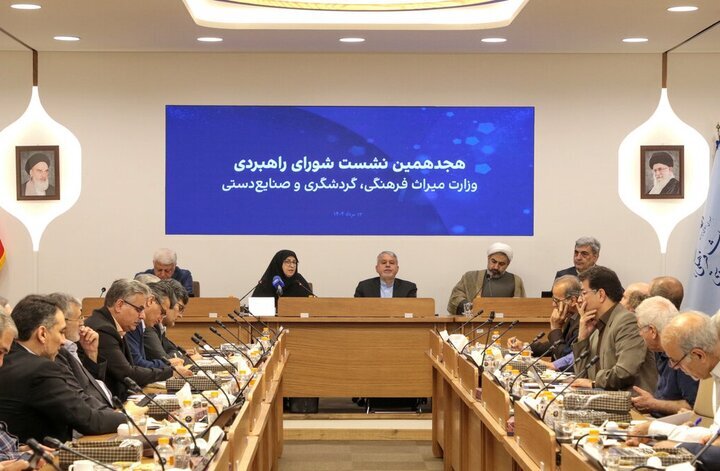Promoting green tourism, a joint strategy of DoE and Cultural Heritage Ministry

TEHRAN-- Shina Ansari, Vice President and Head of Iran’s Department of Environment (DoE), emphasized the need to redesign the tourism development model in Iran and urged for improving strategic cooperation with Cultural Heritage Ministry in green tourism field.
Speaking at the 18th meeting of the Strategic Council of the Ministry of Cultural Heritage, Tourism and Handicrafts, which was held in the Fajr Hall of the Ministry on Monday with the presence of Minister of Cultural Heritage Seyyed Reza Salehi-Amiri and senior members of the council, she called the handicrafts as a clean, local industry that is in line with the country's natural ecosystem, Miras Arya (CHTN) reported.
She warned that promoting tourism industry without environmental attachments will be a threat for cultural and natural heritage of Iran.
Emphasizing the need for institutional synergy to protect the country's natural and cultural heritage, she stated: “There is a strategic and fundamental link between the missions of the Ministry of Cultural Heritage and Department of Environment. Developing sustainable and nature-based tourism is one of our common priorities, because ignoring the environment in the tourism process not only damages natural resources but also leads to the gradual erosion of our civilizational capital.”
Pointing to the landslide crisis as one of the emerging threats against historical monuments of the country, she said: “Although the direct responsibility for the subsidence phenomenon lies with other institutions, we are also concerned about its consequences for the historical monuments. Therefore, we have suggested that special considerations for the protection of the historical heritage be included in land use planning and location of the projects.”
Referring to the existing deficiencies in some tourist areas, he said that in some destinations such as Hormuz Island, the tourism with environmental considerations has led to serious damages to the local ecosystem, she said. This situation is a warning that without a sustainable tourism model, development will become self-defeating, she added.
Ansari emphasized that people, tourists and travel activists must stand with environmentalists. Protecting the nature is not just an organization's responsibility, but a national and cultural duty, she added.
Pointing to the importance of the handicrafts in sustainable development system, she said that the handicrafts sector is a local, green, non-polluting, and environmentally friendly industry. “This valuable resource plays a role in both creating local employment and protecting natural heritage. We are interested in supporting this craft and considering it as part of green tourism development plans.”
On Iran’s biodiversity and geography, she called natural potential as one of the most important pillars of tourism.
“The wetlands, forests, mountains and pristine natural areas of Iran have the potential to be introduced as sustainable tourism destinations. DoE is ready to compile and implement sustainable green tourism in form of a comprehensive Memorandum of Understanding with the Ministry of Cultural Heritage.”
In conclusion, Ansari appreciated the Minister of Cultural Heritage's strategic vision on the issue of environmental sustainability and tourism, noting: “Salehi-Amiri, with a scientific, cultural, and development-oriented approach, has paved the way for strengthening the cross-sectoral cooperation. We hope that this synergy will lead to strengthening the discourse of green tourism and intelligent protection of the country's natural and historical ecosystems.”
KD
Leave a Comment